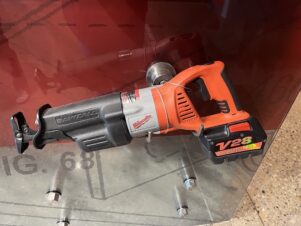Streamlining manufacturing processes involves identifying and eliminating inefficiencies to improve productivity and reduce costs. It is beneficial in reducing unnecessary steps and the number of resources and time required to produce an item. It’s also easier to adapt to changes in demand or product design, allowing manufacturers to respond more quickly to market trends. Several steps can be taken to streamline manufacturing processes, including the following.
Identify bottlenecks
The first step in streamlining manufacturing processes is identifying bottlenecks or inefficient areas. Indeed, bottlenecks can cause delays and inefficiencies in the manufacturing process, leading to increased costs. Identifying and addressing bottlenecks can help to reduce these costs, so keep this in mind. Likewise, you can better plan and manage their resources, such as labor and materials, to ensure that production runs smoothly and efficiently. Fortunately, you can identify and address bottlenecks in various ways. For instance, you can analyze your production data and identify the process or machine that is consistently the slowest or lowest output.
Once you have identified the bottleneck, measure its performance using metrics such as throughput, cycle time, and capacity utilization. Also, study the issue to understand what is causing it to operate at less than optimal levels. Look for factors such as lack of maintenance, outdated equipment, or insufficient staffing. The next step is to prioritize solutions based on their potential impact and ease of implementation. Continuously monitor the issue to ensure that your implemented solutions have the desired effect. Make adjustments as necessary to improve performance.
Implement lean manufacturing
Lean manufacturing is a methodology that focuses on eliminating waste, reducing costs, and improving efficiency in the manufacturing process. Indeed, it can reduce lead times and improve delivery performance while increasing capacity and flexibility. Likewise, it improves product quality and eliminates defects, so keep this in mind. Employee engagement and empowerment can increase due to lean manufacturing. To get started, understand the entire process, from raw materials to finished goods, and identify the steps that add value for the customer. You can also create flow by arranging the process so that work flows smoothly from one step to the next, with minimal waiting or backtracking.
Experts also advise implementing a system where production is based on customer demand rather than forecasts or schedules. While at it, continuously improve the process by eliminating waste and finding new ways to add value. For instance, you can leverage manufacturing processes like just-in-time (JIT) production, kanban systems, precision machining, and visual management to improve product flow and reduce waste.
Automate processes
Automation can limit the need for manual labor, improve accuracy and consistency, and increase production rates. The first step is to identify and prioritize the processes that can be automated. Next, choose the appropriate automation technology for the task, such as robots, conveyors, or programmable logic controllers (PLCs). Robotics and automation technologies, such as CNC machines, are beneficial, so feel free to leverage them. To make it easier, implement a system for monitoring and controlling the automated process. You also want to train employees on the new system and procedures and test and fine-tune the system before full implementation, so keep this in mind. Consider integrating the automation system with other systems, such as ERP or MES, to streamline data flow and decision-making.
Manage inventory
Effective inventory management can reduce costs and improve efficiency in the manufacturing process. And you can achieve this by implementing an inventory management system. This can help you track inventory levels, set reorder points, and generate reports to monitor performance. Consequently, regularly conduct inventory audits to identify any discrepancies in your inventory and make adjustments as needed. Various techniques can make inventory management easier, so you can leverage them. For instance, just-in-time (JIT) inventory management is ordering and stocking items as needed rather than keeping large amounts of inventory on hand.
This can reduce storage costs and minimize the risk of stockouts. Alternatively, a kanban system is a pull-based inventory management method that helps you to only produce or order the items that are needed at the exact time. You should also optimize storage space and implement a FIFO (first in, first out) rotation policy to ensure that older products are used before expiration.
Reduce downtime
Downtime can be a significant source of inefficiency in the manufacturing process. Moreover, you risk losing customers if it becomes frequent. Therefore, finding ways to reduce downtime is essential. And you can achieve this by implementing preventative maintenance to prevent equipment failures and unexpected downtime. You can also improve equipment design and layout to minimize downtime caused by bottlenecks and congestion. Again, automation can help reduce downtime caused by human error and improve overall efficiency, so keep this in mind.
It’s also important to monitor production closely. This way, you can identify potential problems early and take corrective action before they cause significant downtime. Prioritizing communication between all departments and shifts can help identify and resolve issues quickly. While at it, collect and analyze data on production and downtime to identify patterns and trends that can be addressed. Experts also advise keeping spare parts on hand. This way, you can reduce downtime caused by equipment failure. Continuously look for strategies to improve processes and procedures to achieve success.
Embrace technology
Advancements in technology such as IoT, AI, and machine learning can help streamline manufacturing processes by providing real-time data analytics, predictive maintenance, and more efficient use of resources. These technologies can be used to optimize production schedules, improve machine performance, and reduce the need for manual labor. However, you must ensure that the technology can integrate seamlessly with existing systems and equipment to minimize disruptions and costs.
It should also handle current and future production needs, adapt to different manufacturing processes, and be able to accommodate changes in production demands. As a tip, invest in technology with a good return on investment, as they are more cost-effective. It should be reliable and have a great track record of performance in similar manufacturing environments, so feel free to consider this. Some technologies are specifically designed for manufacturing and may have features or capabilities that suit your needs. Before investing in one, consider testing it on a small scale to evaluate its effectiveness and identify potential issues.
To make it easier, implement a system for monitoring and controlling the automated process. You also want to train employees on the new system and procedures and test and fine-tune the system before full implementation, such as ensuring your linear servos is functioning effectively, so keep this in mind. Consider integrating the automation system with other systems, such as ERP or MES, to streamline data flow and decision-making.
Employee involvement
Employees are often the best source of ideas for improving efficiency and reducing waste in the manufacturing process. Encouraging employees to participate in process improvement initiatives and providing them with the needed training and tools can significantly improve efficiency. For instance, training employees on equipment operation and maintenance can help prevent downtime caused by human error. Also, develop a culture of ownership by encouraging all employees to take ownership of their work and equipment. This can lead to a more proactive approach to downtime prevention. While at it, train your employees on the inventory management system and procedures to properly handle and track inventory.
It is important to remember that streamlining manufacturing processes is an ongoing effort and that there is no one-size-fits-all solution. And it is important to continuously analyze production data, identify areas for improvement, and implement changes as necessary. This can be done through continuous improvement methodologies such as Kaizen and Six Sigma, so keep this in mind.
The steps most effective for a particular manufacturing operation depend on the processes and equipment used. However, by following the steps outlined above and continually analyzing production data, manufacturers can work to improve efficiency, reduce costs, and increase productivity, so keep this in mind.




Join the conversation: